Green water in the koi pond is the scourge of outdoor pond owners. Green water is caused by a population explosion of algae in the koi pond. Algae are microscopic, single-celled plants, which can easily multiply to a density of as much as 7,000-15,000 per milliliter. With that many of them in the water, it's no wonder that the water turns green. Koi ponds can get high concentrations of phosphates from food decomposition, and nitrates from the nitrification cycle. High concentrations of phosphates and nitrates are the food for pond algae, along with some iron as a catalyst. So high ammonia in the koi pond will make koi pond green.
Green water in the koi pond can't reduce with mechanical filtration because size of algae very small. The ideal conditions for algae to grow rapidly in number are:
1. Warm water pond, Algae grow well in warm temperatures. In warm temperature water in the koi pond potential to become green.
2. Well-lighted water, plant (algae) photosynthesis need Sunlight.
3. An abundance of nutrients.
4. Koi Feces produce amonia.
If whole or part of condition is fulfilled, algae in the koi pond grow well and water become green.
The key to 'clearing up' green water, therefore, is to prevent the algae from multiplying by removing the ideal conditions for their growth.
Algae Control in The Koi Pond
We Can Control Algae in the koi pond with several way. We Can choose proper way or combination of way. Follow the way to reduce green water in the koi pond :
1. Shade The Pond
Warmth of the water and the availability of light for photosynthesis is modulated by sunlight. Shade the pond will reduce sunlight in the pond. If koi pond shade sunligt can't access pond and algae can't grow well.
2. Remove sources of organic matter.
Removing all harmful compounds from the pond water is proper water filtration. Physically Filtration removes most of the decaying organic matter in the pond. Koi Pond filter must have a water capacity of no less than 10% of Koi pond volume and filter pump must be capable of turning over the entire volume of your pond in one hour. Idealy Filter must 30% of koi pond volume.
3. Remove Koi Feces from the pond.
Koi Feces produce ammonia, Ammonia and nitrites are extremely harmful, and even deadly to koi. Remove koi feces will reduce disolved ammonia in the koi pond. Remove Koi Feces can do with good filtration system.
In Biological filter chamber Certain bacteria convert these ammonia into nitrites, which are further converted by other bacteria into nitrates. Nitrates are less harmful than these two, but they are powerful fertilizers for all plants in the pond, including algae. Coupled with warm water, a suitable pH, carbonate hardness, and the presence of other nutrients like phosphates, nitrates are a sure-fire way of multiplying algae in large numbers.
4. Give Water Cleaner
Water Cleaner use chemical method to control algae. Chemical control usually means the use of algaecides, a chemical which kills or inhibits all types of algae to a greater or lessor degree. Water cleaner can remove green water in the koi pond in short times. Caution must be exercised with these chemicals as overdosing can kill fish.
5. Put other plants in the pond/Filter
Many plants have voracious appetites for pond water nutrients, so having them in the Koi pond will deprive the algae of nutrients.
6. Install UV (Ultra Violet ) system
Ultraviolet lamp systems designed to kill algae and make them clump together. You can put the uv lamp assembly before your main filter, so that the dead algae will not be returned to the koi pond. Ultraviolet systems will effectively kill planktonic algae with the proper size unit for koi pond. UV effectively eliminate green water in the koi pond in a short time.
7. Change Partial Water regulary.
Change 10-30% water regulary, if needed you can change everyday. If not you can change water pond every week.
Theese step can reduce and remove green water in your pond.
Reference:
- Laguna Koi
- KoiAndPond
Monday, June 29, 2009
Thursday, June 11, 2009
Selecting Showa Koi
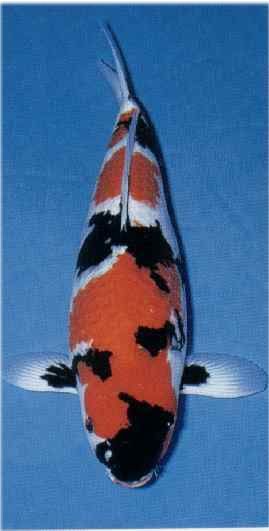
Showa is also a Kohaku koi type, that has a black pattern on top. They are in gosanke koi classification. Select showa must start with that perfect Kokaku. The word, Kohaku, sure comes up a lot.Take the perfect Kohaku and add the black in the right places and you have Showa. Showa is koi type with combination of a good Kohaku and a good Shiro Utsuri koi type. Showa go through many changes as they grow. Many times the black is very deep and only comes out as the fish grows. For this reason, if you see gray areas, it might not be poor quality white but deep black that will appear later.
The sumi on the showa should be strong. It should look like it emanates from the bottom of the fish and properly wrap the body. It is this wrapping of color that gives the Showa the look of strength. There is no more powerful fish than a good Showa. It has double power in the wrapping of red and black. It also has the high contrast of three colors. After the head, the rest of the sumi should be bold and balanced. Look closely at body conformation because of all the black. The black can hide defects in body, mouth and head.
Showa Head
The head of showa should have all 3 colors (red, black and white), preferably in equal mounts. The head on a Showa is very important. This time the head must have black on it. In fact it must have all three colors on it. The shoulder area of the showa should have all three colors and the Ozuke, tail region, should also have all three Best would be to have a good kohaku head with either a lightening stripe or a v-shape in black on the top of the head. Many showas don't develop this until later, so just try to pick one that has good red and white with some black coming out. Classic head patterns start with a good Kohaku face. Then black comes either down the face to divide it, or down the face and across the shoulder to form a Y.This is called Hachiware
Showa Body
Good Kohaku pattern in the body is good showa ,it should be balanced and be placed all through the body. if black is either present or coming up all over the body. Don't worry if the black is of poor quality at an early age. Black develops later in most good quality showa. It is also okay to have an orange-red at this point because the red gets better as the fish grows. Good showa body conformation is like kohaku koi type.
Pectoral Fins
Ideally Showa Koi , almost all of the pectoral fins, except for the outermost tips, should be black. As the pectoral fins grow out, the black seems to stay the same and the white area on the outside seems to spread out. If the pectoral fins are all black at this time, it is often alright, as this too can grow out to have good showa fins.
Fins that are not acceptable are fins with any red, all white fins, or fins with very little black at the base. All other fins should preferably be white, but some black is acceptable. Red is not acceptable in the fins. Pectoral fins should have Sumi at the base, up against the body. This is called Motoguru.
Ideally it should come out about one third of the pectoral length. Also the most perfect motoguru is surrounded by white. The front ray of the pectoral is white. The sumi does not go to the tip and the back ray is white. Strong motoguru is an indication that the sumi will be stable as the showa Koi grows. Dorsal fin is best in white as is the tail, but black in them can be fine. Avoid brush sumi pectorals, which looks more like stripes, or solid black pectorals. Even on young koi, the pectorals should start having the sumi pull back.
Some modern Showa have clear fins, as Kohakus are bred back in the crosses to righten the red. See you must get back to that perfect Kohaku always. Nose sumi also adds to the elegance of Showa and makes it more powerful.
Percentage of 3 Color
Showa koi have 3 color ,another thing to look for in this particular fish is the percentage of the 3 colors to the total fish. The classic showas koi type used to be about 40% black, 40% red, and 20% white. The modern showas koi type , that many judges like, have equal amounts of all 3 colors.
As you can see, the showa are one of the most difficult koi to select at a young age because they change so much as they grow. It is this complexity that makes this one of my favorites of the varieties of koi.
Reference:
AKca Library
Sunday, June 7, 2009
Koi Pond Filtration
Pond water quality is the key to enjoying Koi pond, so it is better to have a smaller pond with superb filtration capability than to have a large pond with undersized filters. Good Pond Filter Design make good koi pond water quality. If we have good water quality Koi will growth well and beautifull. Koi pond filtration not difficult or complicated. It can be very frustrating, time-consuming, and labor-intensive though if it is not carefully planned ahead as part of the pond system. Many koi hobby neophytes simply go ahead with the construction of their ponds with little thought about how filtration shall be set up and maintained. Subsequently each of them realizes that an important feature of the pond system is missing and has to do with a makeshift one after the fact, resulting in an underpowered filter with a fraction of the capacity that it should have. Koi pond filtration is the process of removing waste products and other harmful compounds from the koi pond, it is a basic requirement of koi keeping.
Without koi pond filtration, several things can and will most likely happen:
1) Koi pond will turn green, rendering the pond fish invisible.
2) parasites and other harmful life forms will easily spread from one fish to another.
3) Koi pond will become unsightly and foul-smelling.
4) the pond will be poorly aerated; and worst of all.
5) the water quality can become deadly to its inhabitants, which may lead to a massive fish kill. This reasonable if koi Pond filtration needed for every koi keepers.
1. Proper planning and setting up of the filtration system, for every koi pond built. It is best to have this done while the pond is still in its planning stages as well. If not , It will also result in more frequent and labor-intensive cleaning of the filters. Sooner or later, the hobbyist will shell out more funds in order to correct his poor filtration set-up. This is not to mention the potential loss of expensive koi due to poor filtration.If The Koi Pond not proper planing koi keeper must clean water manually almost every day to get clean water. You must prepare koi pond design before built it.
2.Filter Volume
Recommend a filter volume of not less than 33% of the total pond volume. If We have koi pond with 9000 gallon , filter must not leess than 3000 gallon.Koi Pond Filter can separated in several chamber.There are 3 chamber foltir, 4 chamber etc.
3. Water flow rate
Water flow rate is another important point to consider when designing a Koi pond filter. Filtering the water requires a way by which dirty water will be passed through the filters and delivered back to the koi pond as clean water 24 hours a day. This is achieved by using water pumps. When one speaks of the filter flow rate, what is referred to is the rate at which the pump moves the water through the filter. Recommend a filter flow rate equivalent to displacing the entire pond volume within one hour.
Example if Koi Pond 9000 gallon in one hours pump must flow water 9000 gallon via filter.The filter flow rate should be based on the actual rate at which water is taken out of and returned back to the koi pond, not on what the pump is labeled to be capable of.
4. Water Pump Selection
There are two type of pumps used in koi keeping, the submersible pump and the recirculating pump. For small ponds and water falls, submersible pumps are preferred because they are unobtrusive and silent by virtue of their being submerged underwater while operating.
For large ponds, however, recirculating pumps would be the wiser choice because of their efficiency and long life. Most koi experts recommend setting up two pumps of smaller capacities than buying just one pump of higher capacity to meet the flow rate requirements.

Once the filter capacity and pump flow rate have been established, the filtration stages must be designed. Filters work best if they consist of numerous stages, with each stage specially designed to accomplish a filtration task that the others can not. Having such specially-designed filter stages will allow all harmful wastes and debris to be removed effectively.
A filtration system usually has a couple of stages for mechanically filtering out suspended debris,
and another couple of stages for biological filtration of the water.
1. Mechanical filtration , consists of physically trapping the particulate wastes and debris in the water.
Sand, beads, pads, and brushes are the commonly-used materials for mechanical filtration. Passing the water through these materials traps whatever suspended materials are in the water, e.g., leaves, twigs, fish feces, etc. The first mechanical filter stage usually uses brushes as the trapping medium, because these only trap the relatively larger debris in the water, allowing the smaller ones to pass through.
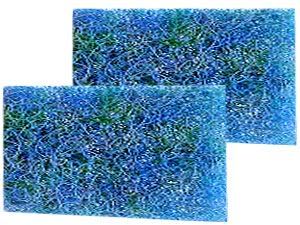
The second mechanical filter stage usually uses Japanese filter mats, beads, or sand to trap the smaller particles in the water. More mechanical filter stages may be added, with the trapping size getting smaller as the filter stages progresses.
2. Biological filtration, as the name implies, employs natural biological processes to convert the harmful wastes excreted by the koi and those produced by decaying plant matter in the pond into less invasive compounds.
Koi excrete ammonia, which is deadly to koi in large doses. Certain anaerobic (non-oxygen-breathing) bacteria convert ammonia into nitrites, which are, unfortunately, also poisonous to koi. The good thing is, there are 'good' aerobic (oxygen-breathing) bacteria that convert nitrites into nitrates, which are no longer deadly to koi.
These 'good' bacteria are also known as nitrifying bacteria. Nitrifying bacteria occur freely in nature, and will populate your pond in time.
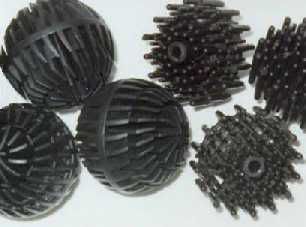
Biological filters usually use bio-balls, sintered glass, porous rocks, ceramic rings, or synthetic high-surface area particles as filter media. Biological filter media are designed to have as much surface area as possible for a given volume, in order to maximize the good bacteria population within the filters.
3.Chemical Filtration
Chemical filters make use of activated carbon as a filtration media that helps absorb chemicals. The carbon used can be cleaned in salt water and reused again. It is important not to use salt water in your pond when using a chemical filter as it might release some of the ammonia. Chemical filtration involves purifying the koi pond water of harmful chemicals by chemically binding them to the filter media. This method of filtration is extremely useful to remove chlorine, pesticides, heavy metals, ammonia and other chemical impurities from the pond water. Chemical filters can help improve the pond clarity and remove pond odor.
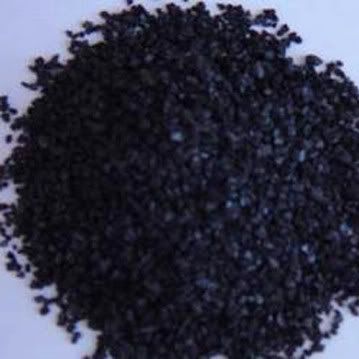
4. Bottom Drain
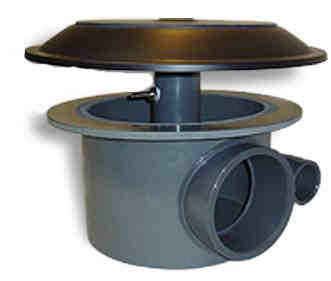
Bottom drain is a drain at the bottom of the pond where dirty water is sucked by the pump for transport to the filter chambers. The bottom drain is normally placed at the center of the koi pond, and should be the lowest point on the pond bottom. Thus, the entire pond bottom surface must slope towards the bottom drain. Pond with no bottom drain will need frequent cleaning of its floor.
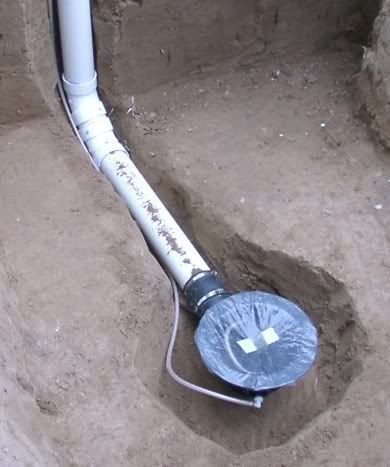
5. Ultraviolet Lamp
Ultraviolet lamp systems for killing algae may also be considered if green water is a persistent problem for you. In fact, many koi experts consider the uv sterilizer as a 'must-have' item for successful koi keeping .These are usually placed before the mechanical filters since uv light makes dead algae clump together. Not All Pond filter design need uv light to keep the water clear though, so you may want to go for this as well. If Biological Filter in the koi pond can't work in maksimum condition UV lamp can help reduce algae in our koi pond.
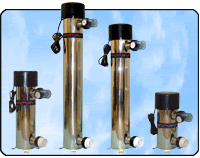
6. Surface Skimmer
Surface skimmers for removing wastes on the surface of the Koi pond will also be required by your pond. There are floating particle in the surface of koi pond from Koi feces, food etc. If not cleaned not good for water quality. Survae skimmer can remove it.
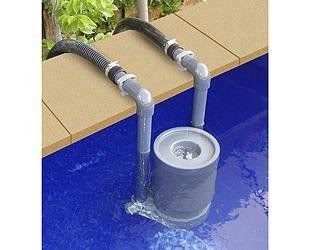
REFERENCE
1.Koiandpond
2.Abcpond
3.koicymru
Without koi pond filtration, several things can and will most likely happen:
1) Koi pond will turn green, rendering the pond fish invisible.
2) parasites and other harmful life forms will easily spread from one fish to another.
3) Koi pond will become unsightly and foul-smelling.
4) the pond will be poorly aerated; and worst of all.
5) the water quality can become deadly to its inhabitants, which may lead to a massive fish kill. This reasonable if koi Pond filtration needed for every koi keepers.
Basic Requirenment To Built Koi Pond Filter
1. Proper planning and setting up of the filtration system, for every koi pond built. It is best to have this done while the pond is still in its planning stages as well. If not , It will also result in more frequent and labor-intensive cleaning of the filters. Sooner or later, the hobbyist will shell out more funds in order to correct his poor filtration set-up. This is not to mention the potential loss of expensive koi due to poor filtration.If The Koi Pond not proper planing koi keeper must clean water manually almost every day to get clean water. You must prepare koi pond design before built it.
2.Filter Volume
Recommend a filter volume of not less than 33% of the total pond volume. If We have koi pond with 9000 gallon , filter must not leess than 3000 gallon.Koi Pond Filter can separated in several chamber.There are 3 chamber foltir, 4 chamber etc.
3. Water flow rate
Water flow rate is another important point to consider when designing a Koi pond filter. Filtering the water requires a way by which dirty water will be passed through the filters and delivered back to the koi pond as clean water 24 hours a day. This is achieved by using water pumps. When one speaks of the filter flow rate, what is referred to is the rate at which the pump moves the water through the filter. Recommend a filter flow rate equivalent to displacing the entire pond volume within one hour.
Example if Koi Pond 9000 gallon in one hours pump must flow water 9000 gallon via filter.The filter flow rate should be based on the actual rate at which water is taken out of and returned back to the koi pond, not on what the pump is labeled to be capable of.
4. Water Pump Selection
There are two type of pumps used in koi keeping, the submersible pump and the recirculating pump. For small ponds and water falls, submersible pumps are preferred because they are unobtrusive and silent by virtue of their being submerged underwater while operating.
For large ponds, however, recirculating pumps would be the wiser choice because of their efficiency and long life. Most koi experts recommend setting up two pumps of smaller capacities than buying just one pump of higher capacity to meet the flow rate requirements.
Pond Filter Structure and Equipment

Pic.2. Comercial Filter Structure
Once the filter capacity and pump flow rate have been established, the filtration stages must be designed. Filters work best if they consist of numerous stages, with each stage specially designed to accomplish a filtration task that the others can not. Having such specially-designed filter stages will allow all harmful wastes and debris to be removed effectively.
A filtration system usually has a couple of stages for mechanically filtering out suspended debris,
and another couple of stages for biological filtration of the water.
1. Mechanical filtration , consists of physically trapping the particulate wastes and debris in the water.
Sand, beads, pads, and brushes are the commonly-used materials for mechanical filtration. Passing the water through these materials traps whatever suspended materials are in the water, e.g., leaves, twigs, fish feces, etc. The first mechanical filter stage usually uses brushes as the trapping medium, because these only trap the relatively larger debris in the water, allowing the smaller ones to pass through.

Japan Filter Matt For Mechanical Koi Pond Filter
The second mechanical filter stage usually uses Japanese filter mats, beads, or sand to trap the smaller particles in the water. More mechanical filter stages may be added, with the trapping size getting smaller as the filter stages progresses.
2. Biological filtration, as the name implies, employs natural biological processes to convert the harmful wastes excreted by the koi and those produced by decaying plant matter in the pond into less invasive compounds.
Koi excrete ammonia, which is deadly to koi in large doses. Certain anaerobic (non-oxygen-breathing) bacteria convert ammonia into nitrites, which are, unfortunately, also poisonous to koi. The good thing is, there are 'good' aerobic (oxygen-breathing) bacteria that convert nitrites into nitrates, which are no longer deadly to koi.
These 'good' bacteria are also known as nitrifying bacteria. Nitrifying bacteria occur freely in nature, and will populate your pond in time.

Bioball as Biologicall Filter Koi Pond
Biological filters usually use bio-balls, sintered glass, porous rocks, ceramic rings, or synthetic high-surface area particles as filter media. Biological filter media are designed to have as much surface area as possible for a given volume, in order to maximize the good bacteria population within the filters.
3.Chemical Filtration
Chemical filters make use of activated carbon as a filtration media that helps absorb chemicals. The carbon used can be cleaned in salt water and reused again. It is important not to use salt water in your pond when using a chemical filter as it might release some of the ammonia. Chemical filtration involves purifying the koi pond water of harmful chemicals by chemically binding them to the filter media. This method of filtration is extremely useful to remove chlorine, pesticides, heavy metals, ammonia and other chemical impurities from the pond water. Chemical filters can help improve the pond clarity and remove pond odor.

Activated Carbon as Chemical Filter Koi Pond
4. Bottom Drain

Bottom Drain
Bottom drain is a drain at the bottom of the pond where dirty water is sucked by the pump for transport to the filter chambers. The bottom drain is normally placed at the center of the koi pond, and should be the lowest point on the pond bottom. Thus, the entire pond bottom surface must slope towards the bottom drain. Pond with no bottom drain will need frequent cleaning of its floor.

Installing Bottom Drain to the pond
5. Ultraviolet Lamp
Ultraviolet lamp systems for killing algae may also be considered if green water is a persistent problem for you. In fact, many koi experts consider the uv sterilizer as a 'must-have' item for successful koi keeping .These are usually placed before the mechanical filters since uv light makes dead algae clump together. Not All Pond filter design need uv light to keep the water clear though, so you may want to go for this as well. If Biological Filter in the koi pond can't work in maksimum condition UV lamp can help reduce algae in our koi pond.

Ultra Violet Lamp
6. Surface Skimmer
Surface skimmers for removing wastes on the surface of the Koi pond will also be required by your pond. There are floating particle in the surface of koi pond from Koi feces, food etc. If not cleaned not good for water quality. Survae skimmer can remove it.

Floating Surface Skimmer Koi Pond
REFERENCE
1.Koiandpond
2.Abcpond
3.koicymru
Thursday, June 4, 2009
How To Select Taishio Sanshoku/Sanke

Sanke or Taishio Sansoku is one of Koi Type from Gosanke Class, other type in gosanke are Kohaku and Showa.The word Sanke literally means tri-color, the three colors being red, white and black. in Japanese Characters, the word Sanke is also read Sanshoku, the term used in early works on Koi.Selecting a good sanke is very similar to selecting a good kohaku.
Basic Sanke Colors
Sanke is a three colored fish with hi (red) and sumi (black) markings on a white body.
- As with the Kohaku, the depth of these colors is very important. The white should be the color of snow - a yellowish white does not give a good background for the pattern to stand out and gives the fish a dull appearance.
- The head of the sanke, as in all varieties of koi, is one of the most important things to look at.
- The head should be the exact same head as kohaku. There must be red on the head and the red should go down to the nostrils.
- The nose is better if it is white.
- One eye may be covered in red as long as the red is not over-powering. Red is too over-powering when it covers both eyes.
- There Must Not Be Any Black On the head.
- Next look for an interesting pattern of red all the way down the body. Do not pick a koi with only red on the front half or on the back half of the body.
- The hi should be of the same quality as on a good Kohaku. It should be of deep hue and of uniform shade.
- The proportion of red to white should, again, be the same as on a good Kohaku. The base of any good Sanke pattern is a good Kohaku pattern.
- The sumi of a Sanke should be fine, uniform in shade and with good depth of color. It should be shiny in appearance. As sumi should overlay the Kohaku-style pattern, the markings need to be clearly defined in order to stand out.
Sumi can appear and disappear over the lifetime of a koi, and sumi of poor quality may be affected by water quality, temperature change and change of environment. Sumi markings on Sanke are also described by their position on the pattern of the koi, so sumi that appears on the white skin is known as "tsubo" sumi, while sumi that appears on the hi is known as "Kasane" sumi.
First black spot is on the shoulder (not on the head). If there is no black until further back on the fish, the head can look too elongated. The rest of the black further back on the fish should be in a nice pattern that is balanced and preferably in the white areas rather than on the red. Some black on the red pattern is alright but the more black in the white the better. The black spots are better if not much larger than a quarter and should not distract from the red pattern.
Modern sankes are basically kohakus with a few small black spots placed in the white field. Red should take up about 70% of the fish, the black about 10%, and the rest white.
At an early stage, look for a fish with a lot of interesting red and very little black. Black tends to come out later and if you start with too much black, the black may be too powerful later. The red may be bright red or orange-red because the red can improve with age. The white should be snow white or slightly pink white. Black develops later, so pick one with only a little black that is balanced now. Avoid any sanke that has a lot of small, black, peppery like spots. Pepper like spots can be a sign of poor quality.
The fins on the sanke should be either all white or white with black stripes. There should be no red in any of the fins. Be careful buying an early sanke with many black stripes in the pectoral fins. These sometimes develop too much black at a later stage.
Sanke Patterns
Although Sanke differ from Kohaku in that they have three colors, the criteria by which the two varieties are judged are very similar.

Sanke Head
There should be no sumi on the head of the Sanke. The head pattern required is the same as on a Kohaku: that is a large U shaped hi marking, which should not extend down over the whole face. Unusual shaped head patterns are not so easily tolerated as on Kohaku, possibly because there is an extra color on the fish and a "busy" pattern lacks elegance and visual impact.
Sanke Body
Large hi markings are preferred down the length of the Sanke's body, complemented by sumi markings, which should also extend the length of the body. Sumi marks should start at the shoulder. Sumi markings should be small in number - an excessive amount of small sumi markings gives the koi an untidy appearance. AKA Sanke - This is a Sanke whose hi markings extends the length of the body. Maurten Sanke - This is a Sanke with a separate hi marking on the head.
REFERENCE:
1.Pic From Narita Koi
2.Akca Library
Subscribe to:
Comments (Atom)
